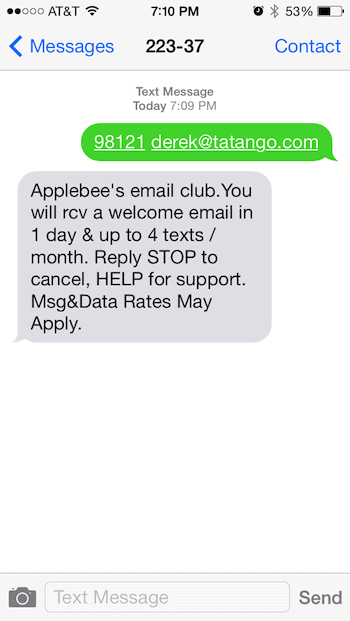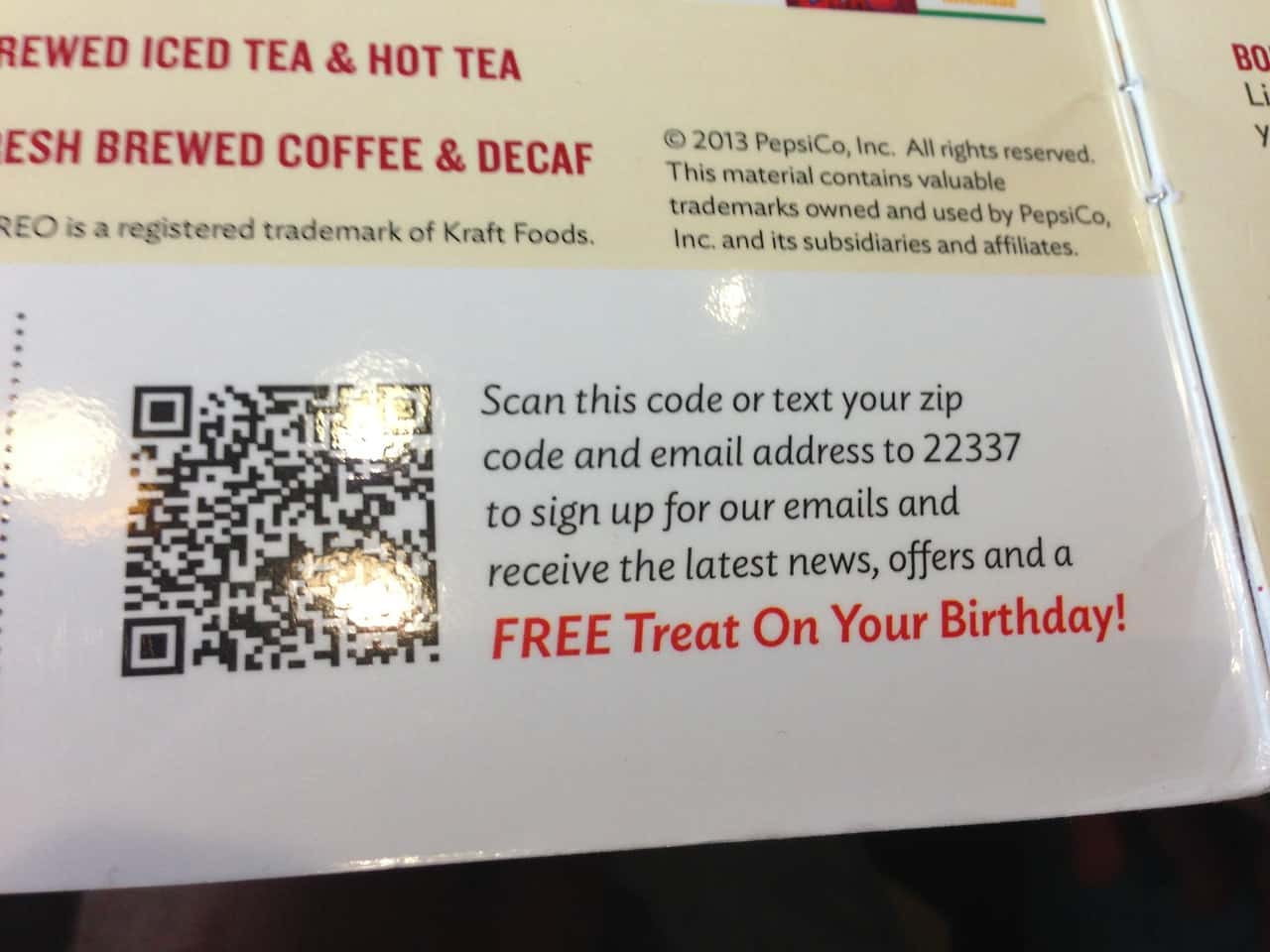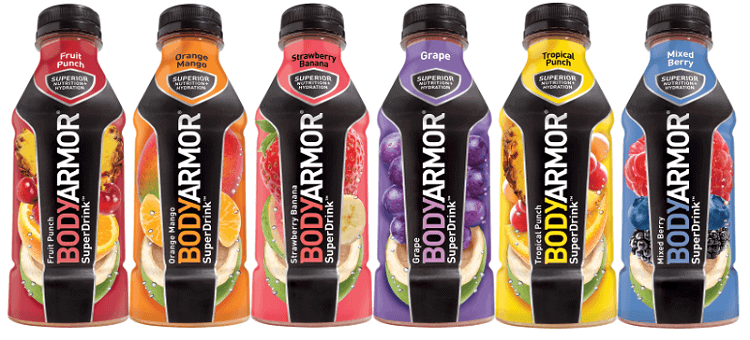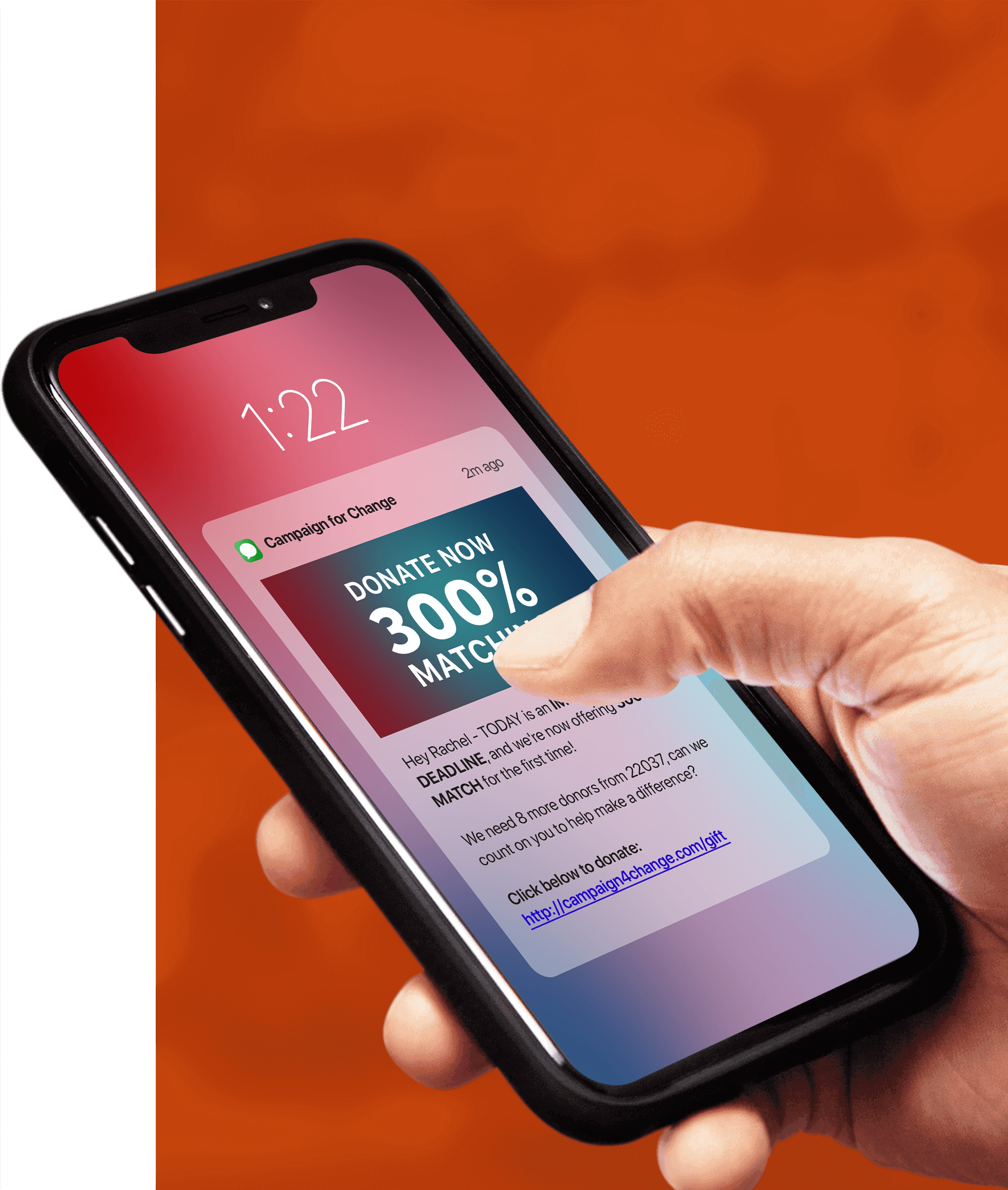Are you a restaurant that’s looking to grow your email subscriber database? If you are, have you ever considered using text message marketing to collecting new email addresses from your customers? Did you know that 5% of all emails collected by Chuck E. Cheese come from customers texting their email addresses to the SMS short code 35505? It’s true!
We recently found another restaurant collecting email addresses through the use of a text message marketing campaign, and this time it was Applebee’s. The text message call-to-action appears in their menu, instructing customers to text their zip code and email address to the random SMS short code 22337. By doing so, they’re opting-in to receive emails from Applebee’s regarding their latest news, offers and a FREE treat on your birthday. You can see the text message advertisement in the menu below.
When you text message your zip code and email address to the SMS short code 22337, you’ll receive the following text message response from Applebee’s.

While text messaging is surely a great way to grow a restaurant’s email subscribers, restaurants have to make a decision upfront about what they’re going to do with their customer’s mobile phone numbers. In the case of Chuck E. Cheese, they decided that they only wanted to use the customer’s mobile phone number as a method to opt customers more easily into their email program.
In the case of Applebee’s, their intent changes, as their call-to-action in the menu tells customers that by texting their zip code and email address to the SMS short code 22337, customers are opting-in to receive emails from Applebee’s regarding their latest news, offers and a FREE treat on your birthday. What Applebee’s isn’t telling their customers is that by texting their zip code and email address to the SMS short code 22337, they’re also opting in to receive up to 4 text messages from the restaurant per month, as it says in the text message received by the customer.
While I doubt Applebee’s is trying to mislead their customers, there’s a big disconnect between what the call-to-action is telling customers, and what actually happens when they interact with the short code 22337. This type of confusion can lead to CTIA short code audits, or even a Telephone Consumer Protection Act lawsuit, as customers that interacted with the short code 22337, never gave their permission to be sent text message advertisements.
If Applebee’s was a client of mine, and they weren’t able to re-print their menus, I’d most likely recommend that the response received when a customer text messages their zip code and email address to the SMS short code 22337, be an SMS auto-reply. This type of SMS campaign doesn’t opt customers into receiving future SMS advertisements. If Applebee’s was still interested in collecting customer’s mobile phone numbers, I’d have them instruct customers in the SMS auto-reply, to reply with another keyword, or some type of affirmative (YES, Y, etc.), which would then opt the customer into receiving future SMS advertisements from Applebee’s. Applebee’s may even want to throw in some sort of incentive for customers to opt-in for future messages, like 10% of their next meal, as we’ve seen this is one of the fastest ways to grow new SMS subscribers. By separating the email opt-in from the SMS opt-in, Applebee’s is making it very clear to their customers what exactly they’re giving their consent for. This method is further explained in a video I did awhile back, which can be viewed here.
This issue illustrates a good point in that there’s usually two parts to an SMS marketing campaign, the call-to-action for the SMS marketing campaign (usually displayed in print, web, email, social, radio, television, etc.), and the actual text messages that make up the SMS marketing campaign. Most brands will consult with an SMS marketing expert on the copy that is placed within a text message, but I’ve seen time and time again that many brands forget to get consult that same SMS marketing expert on the call-to-action. If an SMS marketing expert isn’t involved in crafting both the call-to-action and the text messaging copy, issues like we see here with Applebee’s are surely bound to happen.


